Gea Elika's Blog, page 153
February 7, 2017
Real Estate Investment: Create Passive Income That Lasts
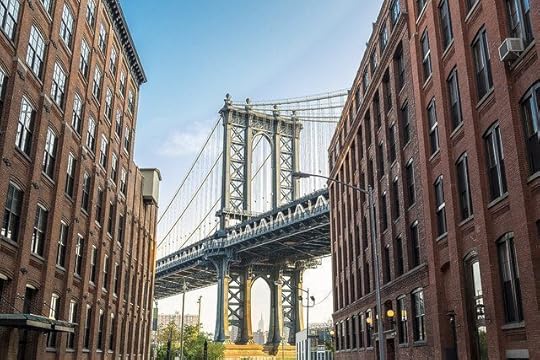
If you have been looking for a way to generate a steady income that will grow, then real estate investment may be just what you need in your financial portfolio. When you become a landlord and collect rent, you can supplement your lifestyle with passive income that will set you up for lifelong financial security. The profit you earn from rent payments is categorized as passive income, which gets taxed less than ordinary active income. This is good news for anyone who wants to keep more of their wealth, especially as they get older and plan to retire.

Image by Phil Roeder / Flickr
Passive Income Helps You Work Smarter, Not Harder
The net profits you collect from rent are classified as passive income, or income you are not actively involved in generating. Passive income will be taxed at a fixed 15% rate regardless of how much you earn. Therefore, even if you make over $100,000 a year and get taxed heavily for your regular salary, all the passive income you generate from rental properties will be taxed at the lower rate. If you are a higher earner getting taxed at 35% of your ordinary income, being taxed at just 15% for your passive income stream keeps more money in your pockets.
Passive Income is Flexible
Another passive income perk is that you can decide how much time to invest in earning it. You can choose to have just a few properties that you leave to a property manager while you keep your day job. It is also possible to become a landlord full-time and live completely off of your net rental profits. Whether you want to invest 5 hours a week or 50 toward your rental income is entirely up to you.
Rental Income Makes a Comfortable Retirement
Retirement income traditionally consists of a fixed pension and social security check every month. With costs of living rising over time, however, you will want to maintain your lifestyle. It may not be possible to live as well ten years into your retirement if your income stays the same while the costs of utilities and food increase. This is where your rental income can help you! Rent is inclined to rise with the cost of living, meaning that as a landlord, you will have income that stays up to speed with inflation. Also, you should be able to pay off a majority of the mortgages on your rental units. By retirement age, you should have several paid-off units generating increased profits and helping you live well.
The Demand for Rentals is Timeless
Though being a landlord isn’t risk-free, the likelihood of your rental unit losing relevance is slim if you keep it properly maintained and marketable to future tenants. After all, humans will always be in need of places to live. Combine this unique security with the likelihood that your investment will increase in value, and you have an asset that is timeless and dependable.
The post Real Estate Investment: Create Passive Income That Lasts appeared first on .
February 6, 2017
Don’t Sweat a Mansion Tax
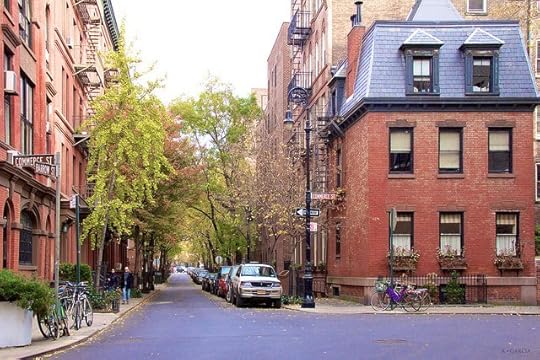
Mayor Bill de Blasio’s renewed calls for a “mansion tax” recently has garnered a lot of attention. While an additional tax may be off-putting to some, the proposal must be approved by the New York State legislature. The passage appears to face long odds, particularly since Republicans control the state Senate. It is worth noting that a similar proposal was rebuffed in 2015.
Nonetheless, although it has not been formally proposed, it is important to understand de Blasio’s plan and how it will impact your purchase.

Image by Kenneth Garcia / Flickr
The proposal
The mansion tax being discussed is a 2.5% levy that applies to real estate sales above $2 million. According to city’s Office of Management and Budget, the tax would affect 4,500 real estate sales in the coming year, bringing in approximately $335 million into New York City’s coffers. The city plans to use the increased cash to fund affordable housing aimed at low-income seniors.
The amount paid can become significant. For instance, a $3 million sale would force buyers to pony up an extra $75,000.
The impact
Buyers should not fret even if the unlikely event come to pass. Even as currently discussed, those seeking a property below the $2 million thresholds will not pay the tax. Granted, New York City, has some of the priciest real estate in the world, making the $2 million level seem low. However, while the 2016 average sales price for Manhattan co-ops and condos was $2.2 million, this is skewed higher by the jump in sales for condos at $10 million or more. According to some reports, the borough’s median sales price was about $1 million last year, and in the $700,000 to $800,000 range for Brooklyn. According to Deputy Mayor for Housing and Urban Development Alicia Glen, about 8.5% of New York City’s residential sales garnered more than a $2 million price tag.
Properties selling for around $2 million will likely be completed slightly below that level to avoid the extra tax. There could be a slew of sales at $1.99 million, and an absence of activity until $2.1 million.
A non-starter
As noted previously, a couple of years ago, Mayor de Blasio requested a 1% tax on home sales greater than $1.75 million and a 1.5% marginal rate for sales that were more than $5 million. This was rejected by the Legislature. The current musings for the mansion tax also come as Governor Cuomo’s state budget calls for a three-year extension of a higher marginal tax rate on those making more than $1 million a year, making another tax on wealthy residents difficult politically.
Final thoughts
Trying to handicap legislation is difficult in the most serene times. The volatile nature of the current political climate makes it extremely challenging. There are also other moving parts to consider. For instance, upper-income taxpayers could receive a tax break should Congress pass a meaningful reduction in federal income tax rates, as President Trump discussed on the campaign trail. We previously discussed an optimistic and pessimistic view should his tax plan come to pass, but an immediate impact would be to create more discretionary income for higher income earners that could more than offset the mansion tax that would be owed.
The post Don’t Sweat a Mansion Tax appeared first on .
February 2, 2017
Trump, the U.S. Dollar, and NYC Real Estate
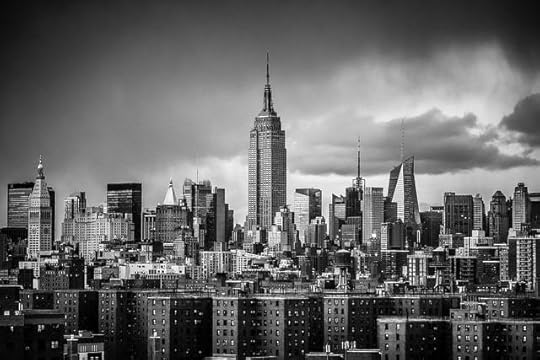
The U.S. dollar exchange movement has received a lot of attention recently. President Trump took the unusual step of discussing its strength against other currencies, and stating it was “too strong.” The dollar had strengthened, notably over the last couple of months, due to the prospect of a Trump presidency, a strong U.S. economy in comparison to the other countries, and the Federal Reserve raising interest rates.
However, due to Trump’s knack for speaking out, it ‘s hard to ascertain exactly what policies he will pursue and how the market will react. We outline two scenarios: a strengthening dollar and a weaker one.

Image by Thomas Hawk / Flickr
The case for a stronger dollar
The dollar strengthening against a basket of major currencies (the US Dollar Index, or DXY is comprised of the Euro, Yen, Pound sterling, Canadian dollar, Swedish krona, and Swiss franc), likely due to a Unites States’ strengthening economy and the Federal Reserve signaling higher interest rates. The stronger dollar accelerated after the November election, with the index rising from about 97 to over 102 in January. The reason was attributed, at least in part, to the prospect of Trump expansionary fiscal policies, such as his discussion of a large increase in infrastructure spending. The theory is that this will make the U.S. economy stronger, with higher interest rates making this a more attractive place for foreigners to invest.
A strengthening dollar makes goods more expensive for foreign buyers. This also holds true for real estate. Foreign investment in New York’s real estate market has grown, according to experts, although there is no hard data. A year ago, there was an estimate that foreigners comprised 15% of all buyers, and 40% for new development. All else being equal, a higher price would curb demand for real estate, which is good news for domestic buyers.
However, there is also a bullish case that can be argued. Foreigners may be more attracted to New York real estate, particularly if they believe the dollar will continue to strengthen. This would create price appreciation due solely to the move in exchange rates.
The case for a weaker dollar
The dollar has weakened over the last couple of weeks. Trump stated the dollar was “too strong,” indicating he would support a weaker dollar. Notably, Trump cited the Chinese currency in his recent comments as well as those he made on the campaign trail.
Although most presidents have promoted a strong dollar, Trump, of course, is atypical. A weaker dollar would make U.S. exports cheaper compared to foreign goods, and imports more expensive. This is in-line with Trump’s stated preference to promote domestic goods and services over foreign counterparts. Still, it is difficult to decipher his messages day-to-day.
A weaker dollar make real estate cheaper in terms of the foreign currency. On the surface, this would boost demand for New York City real estate, and increase prices. However, if foreigners expect the dollar to continue to weaken, they may shun the market.
Where do we go from here?
Pinning down where the dollar is headed is challenging under the best of circumstances. There are special challenges with Trump in office, given his penchant for making statements and tweets. Overall, his administration’s impact is difficult to gauge, but New York City is likely to remain attractive in the long-run.
The post Trump, the U.S. Dollar, and NYC Real Estate appeared first on .
February 1, 2017
How to Make 2017 the Year You Buy a NYC Home

When it comes to buying a home in NYC, the basics apply: the higher your credit score, the lower your monthly payments. Most lenders have a minimum FICO credit score requirement between 660 and 680 for getting a mortgage. If you do happen to find a lender who can lend to borrowers in the 580-credit score range, you’re probably going to have a much higher interest rate and need a higher down payment to get the keys to your new front door. The best mortgage interest rates, and therefore, the lowest monthly payments, are offered to those with scores over 720. Tackle the following home buying preparation tasks to make 2017 the year you buy your NYC home.

Image by dumbonyc / Flickr
Review Your Credit Reports
To avoid surprises and disappointment, borrowers should review their credit reports long before applying for a mortgage. You can order a free copy of your credit report once per year from each of the three major credit reporting bureaus: Experian, TransUnion, and Equifax. You can also use a service like CreditKarma.com to review your credit reports. Make sure everything on the report is accurate, and there are no old, paid, or settled debts affecting your score. If you find debts on your report that you do not recognize or have late payment penalties or other issues, follow the steps to report the error to the credit bureau and try to get your report updated.
Save for Down Payment and Closing Costs
If you don’t already have a sizeable amount of money stashed away, you will want to start saving money toward your down payment and closing costs. Depending on your credit and the type of financing you obtain, you’ll need between 10 and 20 percent of the home’s purchase price in the form of a down payment. Then you will need to cover closing costs, which vary depending on the lender you work with. To get a better idea, you can view average closing costs. You can sometimes get assistance for the down payment from the seller or from local or federal down payment assistance programs. First time home buyers looking to buy 1 to 4 family home, condo, or cooperative in one of the five boroughs of New York City can look into the HomeFirst Down Payment Assistance Program for up to $15,000 toward your down payment or closing costs.
If you can save 3 to 5 months of mortgage payments in addition to your closing costs and down payment, you will be much more attractive to lenders. Lenders want to feel secure in your ability to repay the debt, and having several months of reserves shows them that you are not living paycheck to paycheck.
Reduce Debt
Before applying for a mortgage, it’s also a good idea to decrease the amount of debt you have. For conventional loans, you typically need to keep home expenses below 28 percent of your gross monthly income. Lenders will also consider your other debt obligations to calculate your debt-to-income ratio and determine how much you can afford to borrow to buy a home. The lower your debt, the more you can afford to borrow according to home buying formulas.
While paying down debts, also stop applying for new credit. Lenders will see every company that pulls your credit report and score and the more inquiries you have for financing, the riskier you appear. If your goal is to buy an NYC home in 2017, do not apply for any other sources of credit or financing until after you close on your new home.
When your finances are in order, and you’re ready to start shopping for a home in NYC, choose a mortgage lender and get a preapproval. This will give you an idea of how much you should be able to borrow and help guide you to properties you can afford to buy.
The post How to Make 2017 the Year You Buy a NYC Home appeared first on .
January 31, 2017
Big Tips for Decorating Small Spaces
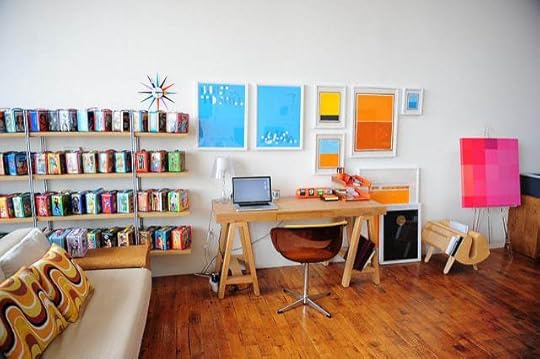
Decorating a small space can be challenging, and every square foot counts when it comes to maximizing your storage and creating a visually appealing space. If you live in an apartment or house with tiny rooms, your decorating should make an effort to help those small spaces seem larger while providing you with a place to put everything, preventing a cluttered appearance. Here are some big tips for decorating small spaces.
Use Light and Bright Color Palettes

Image by Dee / Flickr
Avoid dark colors in areas that you would like to appear larger. Using white, pale gray, cream, and light blue hues will keep the space light and open. Using a monochromatic color scheme in the room, such as white, cream, and beige will help expand the appearance of the space. A trick many interior decorators use in small spaces is to paint the walls light and paint the ceiling darker to draw eyes upward and create an illusion of height.
Use Mirrors Strategically

Image by ben dalton /Flickr
If you hang a mirror on the opposite wall from a window, it will reflect light around the room and help make a room look and feel larger. The bigger your mirror, the bigger the result. Natural light brightens a small space, so also choose sheer privacy curtains to filter the sunlight rather than block it completely.
Skip Bulky Storage Furniture

Image by ih / Flickr
Chests, armoires, and bookcases give you places to store your belongings or collection of knick-knacks, but they also take up a lot of space and look bulky in a small room. Use floating shelves on walls or in place of nightstands to give you ample storage space without using valuable floor space. Don’t overlook the wall space above window frames – you can often use this space for shelving.
Make Your Windows Look Bigger
Instead of installing curtain rods directly on the window frame, place your rods a few inches below the ceiling and an inch or two beyond the width of your windows; giving the illusion of larger windows.
Use a Rolling Kitchen Island

Image by Simplified Building / Flickr
If you have a small kitchen, choose a kitchen island on wheels. You gain additional storage and counter space, but you can always roll it out of the way if you have company and need more floor space. You can also add bar stools to your island or counter tops to save the space that a breakfast table would consume.
Choose Multi-Purpose Items
When possible, choose furniture that can serve more than one purpose. For example, instead of a basic coffee table, choose a chest or ottoman with storage so you can store throw pillows, blankets, books, or other items inside and still use the table top.
Put it On the Walls

Image by Wicker Paradise / Flickr
Instead of placing table lamps on each end table or nightstand, invest in wall sconces. They give you backspace on your tables for other items and provide ample lighting just where you need it.
Small spaces present unique decorating challenges, but with a little thought and planning, you can maximize your spaces and give the appearance of a larger room.
The post Big Tips for Decorating Small Spaces appeared first on .
How to Soundproof Your NYC Home

You know those familiar city sounds – workers, police, kids, horns, and your neighbor’s next door? Noise complaints are common gripes among homeowners and apartment dwellers. It seems impossible to keep the decibels down inside your home, but it’s not. Just because you live in NYC doesn’t mean you must always hear New York City. We reached out to the experts to get a few tips for soundproofing your NYC home.
Areas to Focus on When Soundproofing Your Home

Image by Purple Fuzzy Mittens / Flickr
When soundproofing your NYC home, you sh
ould focus on these key areas to block the noise:
– Walls
– Doors
– Ceiling
– Floors
– Windows
The original soundproofing and insulation standards were overlooked in these areas when NYC homes were originally built. Small changes combined with professional services will help reduce noise pollution in your home.
Easy Ways to Soundproof Your Home
Small changes can make all the difference when soundproofing a home–all you have to do is decorate. Rearrange your home to keep out the noise.
Lay out carpets and rugs throughout your home. Try to cover as much of the floor as you can. The padding beneath carpeting will act as a noise insulator. Not only will you keep your home warmer, but you will also keep it quieter too.
Don’t put your bed near exterior walls or windows. This helps avoid sounds when you fall asleep at night.
Install book cases against walls. When you add a bookcase, it’s much like adding a second wall in front of your existing wall. Fill the bookcase with books, décor, and other items to create an extra layer of noise protection.
Replace old doors and windows, and hang curtains in the new windows. When choosing curtains, don’t go for sheer or lacy. Make sure you select curtains that are heavier and tightly woven together.
Repaint your walls with soundproof paint. Yes, it does exist. Not only will a fresh coat of paint refresh your space, but it will also help keep out extra noise too.
Professional Ways to Soundproof Your Home
Soundproofing your home requires professional assistance if you want to achieve complete silence. There is no one-size-fits-all approach to fixing your home’s sound problem. A thorough inspection and tailored plan is the best solution to keeping noise out. How you keep out the noise depends on the type of noise you hear in your NYC home. It’s not the same for every person. Professional sound proofers use these techniques when soundproofing NYC homes:
Insulate the walls, floors, and ceiling. You can replace insulation or add to it. A professional contractor can assist you with determining what condition your insulation is in, where more can be added, and where insulation can be installed altogether.
Replace the flooring. If you don’t want to completely redo your floor, walk through your home and tighten problem floor boards.
Install a mass loaded vinyl barrier.
Seal gaps and crevices around the home.
Build double walls to create a barrier.
Wrap pipes and cooling/heating ducts with insulation.
If you decide to hire someone to soundproof your NYC abode, make sure they are qualified and equipped with the tools to get the job done right the first time. Any contractor can make promises, but only Acoustical Consultants and Approved Noise Consultants in NYC can deliver. What are some ways you soundproof your NYC home?
The post How to Soundproof Your NYC Home appeared first on .
January 30, 2017
The Best Schools in Brooklyn
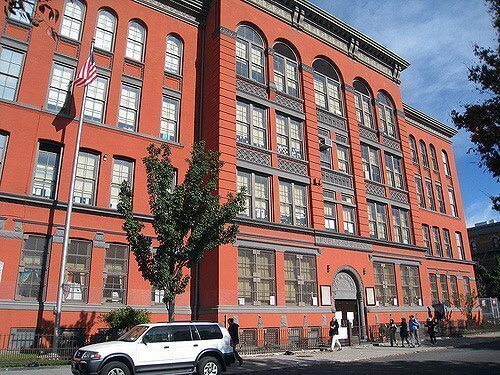
If you want to get a rich social and educational experience for yourself and your children that’s unlike any other; it’s time to move to NYC. More specifically, Brooklyn. This is one of the most popular areas to raise a family in NYC. If you are planning to buy a new home in the city, we have compiled a list of the best schools in NYC. Whether you plan to pay tuition or not, both options still provided excellent educational opportunities for students.
Best Public Schools in Brooklyn
You don’t always have to pay tuition to get your children into good schools. Brooklyn has excellent public schools. Here is our list of the top three.
PS 257 John F Hylan.
The John F Hylan public school is one of the highest-rated public schools in Brooklyn. The school is rich with extracurricular activities, arts programs, music, and clubs. It is often referred to as the “magnet school of the performing arts.” Children are challenged, supported, and happy when they attend PS 257. John F Hylan is for preschool-aged children through grade 5.
Excellence Girls Charter School.
If you live in Bushwick, the Excellence Girls Charter School is a school for girls who attend Kindergarten through third grade. The public school focuses on more than academics; it gives girls the confidence and tools to be successful through various enrichment activities and athletic programs. Reading is one of the most important missions of the school, which improves and supports literacy, creativity, and overall academic success.
William Alexander Middle School.
William Alexander Middle School is a highly sought after program that focuses on art education. MS 51 is open to students who live in Brooklyn’s District 15. The middle school selected students who excelled in 4th grade and scored at least a combined 1371 on Math and ELA tests. When a student applies to the middle school, they must also excel in the interview process and submit a solid writing sample for consideration.

Image by Jimmy Legs / Flickr
Best Private Schools in Brooklyn
If you want to pay tuition, Brooklyn is not short on private schools.
Packer Collegiate Institute.
This private high school received an overall A+ Niche rating. The school focuses on building worldly scholars that are ready for college before graduation. The Packer Collegiate has exceptional academics, diversity, and arts programs. Tuition is near $41,000 per year.
Berkeley Carroll School.
The Berkeley Carroll School is a school that focuses on all facets of education. The school inspires students to be intellectuals through mindful community stimulation, arts, and global thinking. Berkeley Carroll students are often sought out by the best colleges and universities domestic and abroad. The school enrolls just under 1,000 students. Tuition cost for Pre-K is between $22,000 and $29,000. Tuition for scholars from K-12 is $40,980 per year. The school has awarded more than $5 million in financial aid as well.
Brooklyn Friends School.
The Brooklyn Friends School is a K-12 private school with an overall A+ Niche grade. The school offers exceptional learning activities in and out of the classroom. Students are exposed to performing arts, collaborative and innovative classrooms, and a great teaching faculty. Students are encouraged to be creative artists as well as ethical and critical thinkers. Tuition ranges between $20,000 and $41,400 depending on the student’s grade.
The post The Best Schools in Brooklyn appeared first on .
January 29, 2017
8 Dog-Friendly Neighborhoods in NYC

To New Yorkers, pets are part of the family. While some people shop for homes and apartments based on the school districts in NYC, others make sure the neighborhood is perfect for their pets. Don’t waste your time on a place that doesn’t permit pets. Find a home in NYC that allows your pets to socialize, exercise, and live rich lives. Here is a list of the top eight pet-friendly neighborhoods in NYC.
1. Brooklyn Heights, Brooklyn
Brooklyn Heights offers many sites for pets and their human companions. The iconic city delivers the comforts of suburban lawns and spacious walking areas. Brooklyn Heights is home to a couple of dog parks – Brooklyn Bridge Dog Park Run and Hillside Dog Park. For the humans, the neighborhood offers stunning views of the city and historic area with proximity to dog-friendly restaurants such as Sotto Voice and Enid’s.

2. Park Slope, Brooklyn
If you want to stay in Brooklyn, pets love Prospect Park. The neighborhood is lined with grand brownstones and trees along the way to the park. There is no limit to where you can walk your pooch. You can enjoy the beauty of the street-view walk or let your pet off the leash and to explore the park. It should be noted that Park Slope is home to the only Dog Beach. Need we say more?
3. Fieldston, Bronx
Fieldston is a nice area with large homes, comfortable living, and private neighborhood space. This Bronx neighborhood has sprawling lawns, clean landscapes, plenty of trees, and the rural feel that pets and their owners adore, all without leaving the city. Fieldston allows dogs to go on as many walks as they want in the vast 1,000-acre Cortland Park.

4. Lower Manhattan
Lower Manhattan is home to great spaces for residents and their four-legged family members alike. Lower Manhattan has Battery Park City, which is located near Hudson River Park. The park offers superb views and space to walk your pets. Lower Manhattan also has plenty of sidewalks and walkways to keep your pet busy. Many Civic Center properties are advertised as pet-friendly areas as well. Lower Manhattan is close to the Kowsky Dog Plaza and Tribeca Dog Park.
5. Upper West Side
You can’t deny that properties close to Central Park are perfect for furry friends. The Upper West Side offers proximity to the park, scores of pet stores, and a dog run at Riverside Park. Residents and their pets especially enjoy the early morning off-leash play times. As for you, you can get to know other pet-friendly neighbors nearby.
6. Midtown East
Midtown is close to Central Park, but there are other park options as well for you and your pooch. DeWitt Clinton Park and Peter Detmold are also close to many properties. Midtown East is swelling with pet shops, pet stores, and pet-friendly start-ups. If you want to enjoy a meal with your dog at your side, restaurants like the Crave Fish bar in Midtown East allow dogs.
7. Hunters Point, Queens
If you prefer Queens, Hunters Point offers many properties for pet owners. Residents of Hunters Point enjoy trips to any one of the pet stores nearby and dog runs in the area. Regardless of your schedule, Fido can always get his exercise at the Gantry Plaza State Park 24-hour dog run. Hunters Point is only a subway ride away from Manhattan. If you are up for Greek food after a long day, head over to the Greek Family Restaurant for a bite to eat. There is a small sitting area outside where you can enjoy a meal with your furry companion.
8. Kew Gardens, Queens
Kew Gardens is a neighborhood in Queens known for its community spirit, holiday gatherings, privacy, and green space. Kew Gardens offers residents opportunities and space for walking, biking, running, and pet adventures thanks to its proximity to the Forest Park, which was designed by the iconic Frederick Law Olmsted.
Properties for pet owners are in high demand. Don’t miss your chance to find the best property for you and your four-legged family member(s).
The post 8 Dog-Friendly Neighborhoods in NYC appeared first on .
January 27, 2017
Real Estate Investing: Cash is King
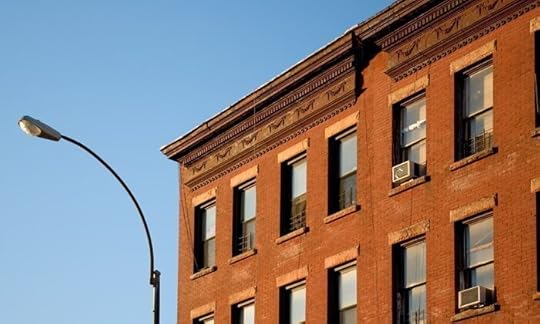
One strategy for real estate investors involves renting out commercial or residential property. You can actively monitor and manage the property yourself, or hire a specialized company to do so on your behalf. Either way, it is important to accurately budget your cash inflows and outflows and measure your return.
Cash inflows
Collecting rents should be the fun part of real estate investing. Each month, a rent check is expected to come in. However, there are challenges in measuring your expected incoming cash flows in advance.
There are monthly rents, and your income should merely be this amount times the number of units you own. However, this does not take into account vacancies, which should be factored into your calculations. One approach is to use a historical number. You can also choose to be more conservative and use a higher vacancy figure, particularly given the economy has been growing recently, and the rental market has been strong in New York City over the last several years. For instance, if you own a building with ten units, each with a monthly rent of $10,000, that is a monthly cash flow of $100,000. Assuming a vacancy rate of 10%, your budgeted monthly income is $90,000. Of course, you can also have a more conservative rent figure in case you can’t receive the same amount from a new tenant. Keep in mind; New York City has one of the most favorable laws for tenants in the country. This means you may be stuck with a non-paying tenant for quite a while.

Image by Adrian Kinloch / Flickr
Cash outflows
While there are difficulties budgeting for rent collections, doing so for cash outflows presents even larger obstacles. Certain expenses are known, such as your mortgage payment, assuming the interest rate is fixed. However, taxes and insurance tend to go up annually. There are also monthly expenditures for utilities (the property owner is responsible for certain ones such as water and gas), and maintenance/common charges if you own a co-op/condo, which is more difficult to estimate, particularly since these tend to increase over time. Should you hire someone to manage the properties, there will be a fee. Lastly, maintenance is an unpredictable but omnipresent cost.
While certain repair costs will be covered by your monthly maintenance/common charges, that is not the case for all of them. For instance, broken appliances such as a refrigerator or stove may fall under your umbrella. In a condo, you own the airspace, meaning you are responsible for fixing anything that is in the interior of the building.
The return
In real estate parlance, the annual return is called the capitalization rate, or cap rate. Ideally, your budgeting process has proven to be fairly accurate, and your properties should generate positive cash flow. Dividing your net cash flow (income fewer expenses) by the purchase prices equals the cap rate.
Even before purchasing the property, you can determine your estimated cap rate, providing your budget is based on reasonable assumptions. You can decide whether or not the return is adequate. A buyer’s agent can help you examine historical cap rates to put the figure in context. Over a long period, the cap rate has typically been 3%-4%.
Final thoughts
We have not factored income taxes into the equation. IRS rules allow you to deduct depreciation on your rental property, providing you own the property, use it in your business or income-producing activity, the property has a determinable useful life, and it is expected to last more than one year. If you rent your co-op, the IRS allows you to depreciate your stock. This deduction serves to reduce your taxes, and increase your after-tax cash flow.
Potential capital appreciation was also not considered. While the cash flow should provide a steady income stream, there are also potential rising real estate values that can increase your wealth. However, focusing on the cash flow basics is the first place for investors to start.
The post Real Estate Investing: Cash is King appeared first on .
January 24, 2017
Best NYC Neighborhoods for First Time Homeowners
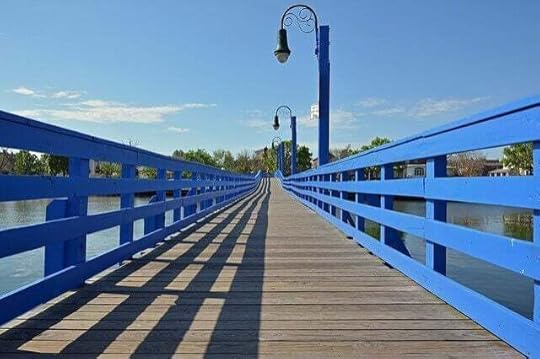
Becoming a first-time homeowner in NYC does not have to be a far-fetched dream for people without an extremely high-paying job. Many believe that they must live upstate and commute to their metropolitan career. The truth is that there are plenty of affordable homes in the NYC area for the first-time buyer who has not been given a gift of a down payment or inherited property from family. The more space you are willing to put between your home and mid-town Manhattan, the more likely you are to find a home that is within your budget. Here are a few places for a first-time buyer to consider when starting your search:
Riverdale, Bronx
Riverdale has been consistently leading the five boroughs when it comes to the highest amount of homes compatible with those who are buying for the first time. While Riverdale has expensive suburban homes, there are plenty of condos, studios, and co-op one bedrooms on the market that are priced ideally for a first-time buyer. This neighborhood is great for those who are looking for a quiet, suburban environment.
Bay Ridge, Brooklyn

Photo by Alex Flint / Flickr
Bay Ridge is not only home to affordable condos, one-bedrooms, and studio co-ops, it’s an area that has plenty to offer aesthetically. You’ll gain views of tree-lined streets, lush parks, and low-rise architecture. This neighborhood is up and coming with plenty of locally owned bars and restaurants. Hop on the R train for a 30-minute ride into Midtown.
Sheepshead Bay, Brooklyn
 Image by Peter Miller / Flickr
Image by Peter Miller / Flickr
Just south of Bay Ridge you’ll find even more affordable Sheepshead Bay. Because of its distance away from Midtown with a much longer ride that starts at the end of the B/Q line, the prices for homes are quite affordable for the first-time buyer. Apartments have been found to start around $85,000, which is a real bargain in the City. Here you’ll find many condos and one-bedrooms as well as co-ops.
Forest Hills, Queens

Image by Peter Dutton / Flickr
Forest Hills, Queens is the ideal area for those who are looking for larger two-bedroom units. The neighborhood also hosts a fair amount of economical one-bedroom and studio apartments. The larger units display the character of homes that have been preserved from the pre-war era. Savor interior designs that reflect a time when great attention was paid to detail. In Forest Hills, the first-time buyer will be surrounded with freestanding houses within a serene, suburban atmosphere.
Inwood, Manhattan
 Image by Scott McDonough / Flickr
Image by Scott McDonough / Flickr
At the northern tip of Manhattan, you’ll find Inwood. This area is perfect for those who don’t want a quick commute but instead value a larger space. Getting to Midtown is a bit of a hike, but the neighborhood has access to the 1 and A subway lines. One-bedroom co-ops are affordable here, and you’ll gain the views of the Harlem River and sprawling Inwood Park. Take time out to de-stress at La Marina that sits along the waterfront and encompasses 75,000 feet.
Consider Co-Ops
If you’re indeed looking to expand your search to trendier areas closer to Midtown Manhattan, considering affordable co-ops will bring you to the West Village, Chelsea, the Lower East Side and Park Slope. Before buying for the first time, decide what aspect is most important to your living situation: space, commute, quiet, scenery? From there it will be easier to buy a home for the first-time in NYC.
The post Best NYC Neighborhoods for First Time Homeowners appeared first on .



